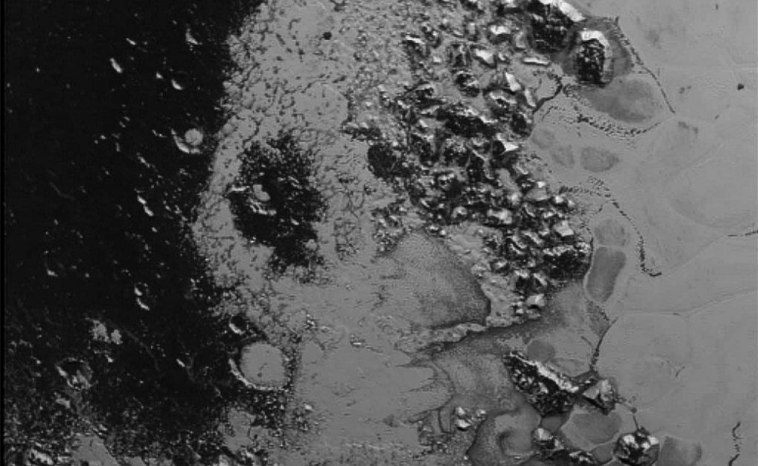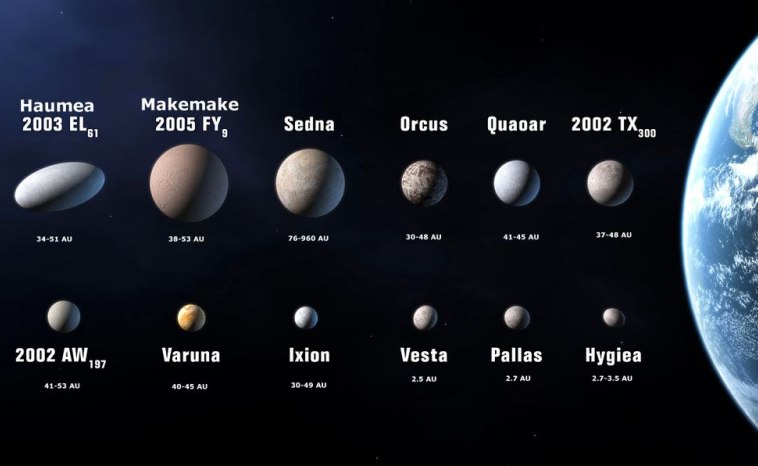Why Is Pluto Not a Planet?

For over 70 years, Pluto was proudly part of the Solar System Planet Club until the International Astronomical Union revoked its membership in 2006. But what changed for Pluto to lose its planetary status? In this article, we’ll tell you everything you need to know.
Our technological abilities are constantly increasing, leading to incredible new tools like the James Webb Space Telescope. Because of this, we’re finding more and more planets each year – but it’s not very often that we lose one! Yet in 2006, the outermost planet of our Solar System, diminutive Pluto, was downgraded from a planet to a dwarf planet. But why is Pluto not a planet anymore?
What Is Pluto?
Pluto is a dwarf planet located in the Kuiper Belt, a doughnut-shaped ring of icy bodies on the outskirts of our Solar System. With a diameter of about 2,400 km, it’s only 70% the size of the Moon and just 18% of the diameter of Earth. Pluto also has a more oval-shaped and tilted orbit than the planets of our Solar System. This means that while the dwarf planet is usually further away than all of the official planets, sometimes it’s closer to the Sun than Neptune. It also takes Pluto 248 years to make it all the way around the Sun – so we still haven’t seen one Plutonian year since its discovery!
Pluto’s distance from the Sun also makes it a chilly world, with average temperatures of -387 °C and only 1/900th of the sunlight we get here on Earth. If you’ve ever wondered what daylight looks like on Pluto, the people at NASA have created a fun tool that tells you when the light in your hometown will be the same as the Midday sun on the dwarf planet!
Pluto has five moons, of which the biggest and most famous is Charon. Charon is less than 20,000 km away from Pluto (for comparison, the Moon is almost 385,000 km away from Earth. Charon is also nearly half the size of Pluto, meaning that the two bodies are technically a double-planetary system – the only one of its kind in our Solar System.

National Aeronautics and Space Administration, CC0, via Wikimedia Commons
National Aeronautics and Space Administration, CC0, via Wikimedia CommonsWhen Was Pluto Discovered?
While Clyde Tombaugh officially discovered Pluto in 1930, evidence for its existence dates back to the 19th century. French astronomer Urbain Le Verrier first predicted the presence and position of Neptune based on discrepancies in the expected orbit of Uranus. Neptune was later discovered by Johan Gottfried Galle, almost precisely where Le Verrier had predicted. Following the discovery of Neptune, astronomers still felt that the new planet didn’t fully explain the orbit of Uranus, so searches for more new objects continued.
Most of the detective work in the discovery of Pluto took place at the Lowell Observatory in Flagstaff, Arizona. After Percival Lowell, the observatory’s founder, laid much of the groundwork, Clyde Tombaugh picked up the mantle in 1929 after Lowell’s death more than ten years earlier. On February 18th 1930, Tombaugh found photographic evidence confirming Pluto’s existence in photos he had taken a month earlier using the observatory’s telescope.
Why Is Pluto Not a Planet?
Shortly after the turn of the millennium, astronomers were making exciting discoveries in the Solar System’s outer reaches. The findings of objects such as Sedna, Eris, and the ringed Quaoar were fascinating, but they did beg the question: if Pluto is a planet, shouldn’t these objects be planets too?
After several debates, in 2006, the International Astronomical Union defined a dwarf planet as an object that:
- Orbits the Sun,
- Has enough mass to have formed a roughly round shape, and
- Has not cleared the area around its orbit of other objects.
Pluto can happily tick off the first two of these requirements. The third point, however, proved to be its stumbling block. Pluto’s orbit is also occupied by other Kuiper Belt objects, meaning that it hasn’t cleared the neighbourhood around its orbit and could only now be classified as a dwarf planet.

Petros000 at English Wikipedia, Public domain, via Wikimedia Commons
Petros000 at English WikipediaSome details removed by Jan Kameníček, CC0, via Wikimedia CommonsAre There More Dwarf Planets Like Pluto?
Over the years, astronomers have found more dwarf planets, such as Haumea and Makemake. Additionally, Ceres, an object formerly classed as an asteroid in the main asteroid belt, has been reclassified by astronomers as a dwarf planet too. Because trans-Neptunian objects are a long way away and typically relatively small, they are pretty hard to spot. However, with improved telescope technology, astronomers will likely find more dwarf planets soon. At least Pluto has company in its new club!
While we wait to discover new objects at the edges of our Solar System, you can learn more about the night sky with the OSR Star Finder App. Using the app, you can locate stars and constellations or even find your own named star.

